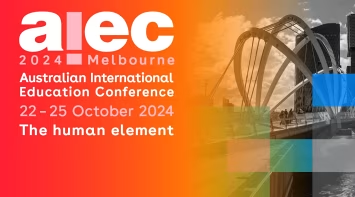Admissions teams are responsible for selecting and processing applications of best-matched, high-quality students for their institution and play an integral role in the critical early stages of the student experience. So, what do prospective students expect during the admissions process and how can institutions implement a streamlined and hassle-free approach for them?
Using expert insights from Destination Manager, Amrita Chauhan, and Assistant Destination Manager, Summer Feng, of our IDP Australasian Onshore Team, we’ve compiled a list of the five things international applicants want from admissions teams.
1. Transparent offer turnaround time
Before students arrive at their study destination, they spend a significant amount of time researching, planning, budgeting and coordinating their study abroad experience. In return, they expect a high-level of interaction and service, from comprehensive responses to their enquiries to clarity and transparency regarding the application and enrolment process.
First and foremost, applicants want admissions to be clear about how long they can expect to wait before finding out if their application has been successful or not, so they can start planning their journey accordingly. Clarity and accuracy relating to turnaround times is key; not only because it is convenient for applicants, but more specifically because turnaround times differ between institutions and courses.
For example, admissions teams should inform applicants that slower turnaround times might be expected if they are applying to a high demand institution, program, or a program where there are specific knowledge or experience requirements. The same rule applies for turnaround times on highly desirable courses, such as Medicine and Law, where there may be enrolment caps, limited places or more selective assessment processes in place.
In October, IDP released the Emerging Futures 4 (EF4) survey, which collated the views of more than 10,000 prospective and current international students. The report showed that nearly a quarter of students who chose Australia as their first-choice study destination would have re-considered their choice of institution if they hadn’t received a decision on their application after two weeks, while over 28% said they would have reconsidered their options after 4 weeks of no response.
Given that a significant proportion of survey respondents considered between 2 and 4 weeks to be the most reasonable amount of time to wait for a decision on their application, longer wait times can reduce applicants’ interest and increase their frustration, stress, and uncertainty.
2. Clear study requirements attached to a chosen course
Applicants want admissions teams to be clear on the study requirements for their desired course, to ensure they aren't wasting valuable time or setting up unrealistic expectations. These requirements include study pre-requisites, GPAs, and English language requirements.
Not only do transparent study requirements help applicants choose a course that is right for them, but they also reduce the risk of applications being made for programs that are not best matched. Furthermore, a lack of transparency surrounding entry requirements can directly impact turnaround times for admissions teams, leading to lower conversion rates and a waste of precious admissions processing time.
3. Clear entry requirements/Genuine Student requirements
Similar to study requirements, students want clarity in relation to the entry requirements of their chosen destination. In Australia, this comes in the form of the Genuine Student Test (GST), most recently known as the Genuine Temporary Entrant (GTE) requirement. A Genuine Student submission must be completed by the applicant to prove to the Australian Department of Home Affairs that they solely intend to live in Australia to obtain an education. Applicants need admissions teams from their desired institution to outline clearly and promptly what the requirements are and how best to prove they fulfil them.
Entry requirements may vary depending on where the applicant is from and what program they are applying to, but these requirements typically include a personal statement of purpose and supporting documentation. In Australia, the updated Genuine Student requirements are a small but significant step for prospective students to action. Admissions teams should clarify their updated Genuine Student requirements, so that applicants can complete this step correctly and resume focusing on their pre-arrival planning.

4. Eligible scholarships
While the cost of living crisis is undeniably hitting everyone hard, international students are uniquely impacted. Disadvantages can be exacerbated due to lack of initial funds, lack of familiarity with how to secure accommodation in Australia, being taken advantage of by unscrupulous landlords or even discrimination. Understandably, international students want to prioritise their studies without the stress of financial struggles. Scholarships are one of the most popular ways international students can achieve this; however, students want to know which scholarships suit them best according to their needs.
For example, if an institution is based in regional Australia, applicants will most likely be seeking an accommodation scholarship, due to the comparatively tight rental market in those areas. If admissions teams actively promote their institution’s available scholarships, this provides financial reassurance to applicants and can help ease their concerns. Where scholarships are unavailable, admissions teams should be upfront with applicants if no further funding avenues are available.
5. Study credits and exemptions
Similar to applying for an eligible scholarship, knowing which credit or exemptions are available can help ease an international student’s initial financial evidence shown as well as ease cost of living concerns. Course credits and exemptions can reduce a student’s required study hours per term or overall study period. This reduction may allow more time for part-time work or hasten the graduation point, after which a student may decide to remain in Australia on an eligible post study work visa. It’s also important that applicants understand the difference between credits, advanced standing and exemptions. Some institutions use these terms interchangeably or inconsistently, but they can have different meanings. Admissions tams should ensure the terminology they use is the same as their faculties to limit any confusion amongst applicants.
Being transparent about study credit, advanced standing or exemptions is valuable information for international students. Institutions that maintain consistency in terminology in their communication with applicants and clearly define these terms can ease confusion and ad hoc requests of admissions teams for clarification and information.
Conclusion
These five points are simple but effective strategies which admissions teams can build upon to enhance both their institution’s standings and their reputation amongst applicants and prospective students. For more information on IDP’s client support services, including how we can help your institution to strengthen your lead generation, applicant engagement and student recruitment strategies, click here.
You might like...

How This UTS Graduate Went from Student to Student Representative
We chat with Manisha Shrestha as part of our Student Success Stories
How IDP Helped Sarbjeet Singh Embark on his Award-Winning Student Journey
Victorian International Student of the Year, Sarbjeet Singh discusses his journey from Chandigarh to Geelong

Connecting Prospective Students with Experienced Students: Why Peer-to-Peer Engagement is Valuable and Effective
Powerful influencers, advocates for your brand – student ambassadors are key for recruitment.

